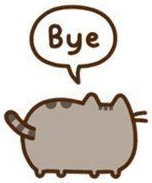Classification of Eye Movements based on their functions
Introduction
Our eyes move due to following reasons:
- To keep visual images as stable as possible on the retina.
- To change the direction of gaze.
- To prevent the fading of retinal images.
Stabilization of images
If our eyes fail to keep stable the visual images on the retina, it leads a motion smear. With the motion smear, we often fail to judge object location in space since the images we accepted become a blur. Vestibular-Ocular Reflex (VOR) and Optokinetic Nystagmus (OKN) are representative eye movements to stabilize images on the retinas.
- Vestibular-Ocular Reflex (VOR): This reflex is to stabilize the gaze during head or body movement by producing eye movements in the direction opposite to head or body movement, thus preserving the image on the center of the retina. VOR can be classified into two phases: slow phases and fast phases. Most of VOR in natural cases is a slow phase which cancels the head rotation to keep the gaze steady. When a head movement carries the eye too far to handle with only slow phase, a fast phase which is a saccade recenters the eye past primary position to anticipate continued motion. (*Comatoes patients show slow phase but fast phase; eye travels to an edge and stays there.)
- Opto-Kinetic Nystagmus (OKN): This is also called the Opto-Kinetic Reflex (OKR), or Parade nystagmus, or Railway Nystagmus. OKN is elicited by periodic visual stimuli drifting across the subject's visual field. When we ride on a train, we can observe objects like trees coming closer to us. To preserve stable image on a retina, the eye tracks the objects in the direction of their movement until the eye at an extreme position in orbit (slow pursuit, Ocular-Following Response (OFR)). Then, the eye rapidly moves in opposite direction to look at a new object (fast, saccades movement).
Changes in gaze direction
If our interest moves from one to another, we also move our fovea to the new object of interest. In order to move and fixate the eye to a new target, we often use Saccades, Pursuits, and Vergences.
- Saccade: This means a quick, simultaneous movement of both eyes from one to another position. (It also serve as a mechanism for the fast phase of optokinetic nystagmus as referred above.)
- Pursuit: This is also called smooth pursuit which allows the eyes to follow a moving object. Most people are not able to initiate the pursuit without a target. If a target moves greater than 30˚/s, catch-up saccades are often required in pursuit movement. Smooth pursuit is asymmetric: most humans tend to be better at horizontal than vertical pursuit and better at downward than upward pursuit.
- Vergence: A vergence is the simultaneous movement of both eyes in opposite directions to obtain or maintain single binocular vision. To look at the nearby object, the eyes rotate towards each other (convergence), whereas to look at the object far away, the eyes rotate from each other (divergence). As opposed to the 500˚/s velocity of saccade movements, vergence movements are far slower, around 25˚/s.
Preventing the fading of retinal images
When an image is stabilized on the retina by one means or another, it soon faded and disappears. A similar fading phenomenon is the Troxler's fading. When you fixate your eyes to a particular point for a while, unchanging nearby images will fade away and disappear. This fading phenomenon has been attributed to the adaptation of visual neurons. To avoid such disappearance, the nervous system carries out a mechanism called fixational eye movement, which continuously stimulates neurons in the early visual areas of the brain responding to transient stimuli. Miniature ocular movements are as follows:
- Drift: Ocular drift is the fixational eye movement characterized by a smoother, slower, roaming motion of the eye when fixed on an object. The exact movement of ocular drift is often compared to Brownian motion, which is the random motion of a particle suspended in fluid as a result of its collision with the atoms and molecules that comprise that fluid. Ocular drifts occur incessantly during intersaccadic fixation. The frequency of ocular drifts is a range of 20 to 40 Hz.
- Ocular Micro-Tremor (OMT): OMT is a constant, high frequency, low amplitude eye tremor occurring at frequencies in a range of 40 to 100 Hz. In a coma, there is a loss of high-frequency components of tremor and the extent of this reduction is related to the patient's prognosis.
- Microsaccade: This is also known as "flicks" which is saccades, involuntarily, produced during the fixation periods. It is the largest and fastest within the fixational eye movements. Like saccades, microsaccades are usually binocular, and conjugate movements with comparable amplitudes and directions in both eyes. The only way to distinguish microsaccades from saccades is by the time in which they happen: during fixation. Regular saccades are produced during the active exploration of the eye, during non-fixation tasks whereas microsaccades are only produced during fixation tasks.
Note that the existence of these movements has been known since the 1950s, only recently their functions have started to become clear.
References
https://www.dartmouth.edu/~rswenson/NeuroSci/chapter_8D.html
https://en.wikipedia.org/wiki/Saccade
https://en.wikipedia.org/wiki/Nystagmus
http://schorlab.berkeley.edu/passpro/Gaze%20STABILIZAT4.pdf
https://en.wikipedia.org/wiki/Vestibulo%E2%80%93ocular_reflex
https://www.slideshare.net/GauriSShrestha/gaze-shifting-gaze-holding-ocular-motor-functions
https://www.dartmouth.edu/~rswenson/NeuroSci/chapter_8D.html











